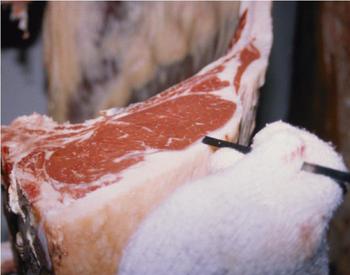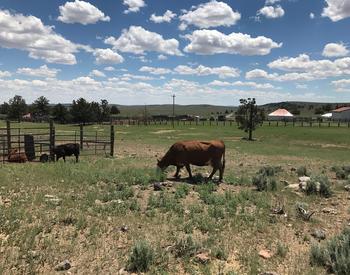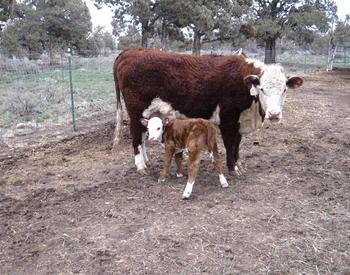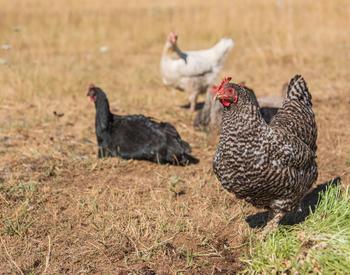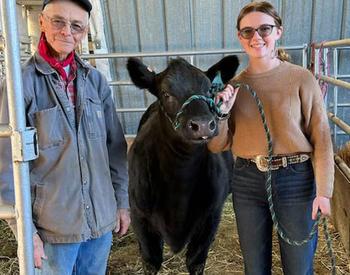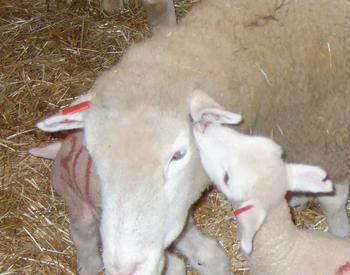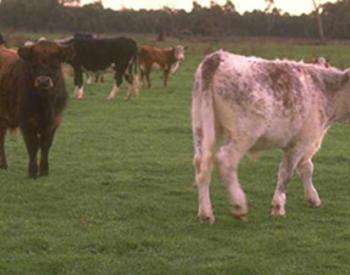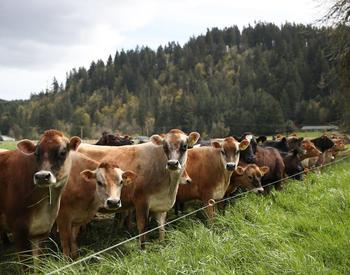Here's a look at the commonly used equipment for at-home slaughtering and carcass fabrication. All the equipment can be purchased with relative ease. This isn’t a comprehensive list but has the basics depending on resources and budget. The equipment included are items deemed essential for proper and safe livestock processing for the backyard.
Note: The links provided are not endorsements of makes or models. They are provided to offer an overview of the equipment and provide additional details on the specifications. Additionally, this equipment is available from a variety of vendors, not just the ones listed here.
Online meat processing equipment vendors:
- LEM
- Walton’s
- Bunzl-PD
- The Sausage Maker
- Clark Meat Processing Products (Oregon-based company)
Slaughter knives
- Skinning/hide removal, primarily for beef and pork, especially around the flank where broad strokes area achievable: 5-inch beef or lamb skinners. Victorinox, F.Dick and Dexter-Russell are quality, affordable options.
- Bleeding/sticking knives: I use and recommend a 6-inch narrow, stiff boning knife for bleeding post-stunning. I would not recommend using a flexible blade. I use a Victorinox model.
- Fine skinning, cut lines and trotter removal: These are used to remove feet/hooves at articulating joints and by cutting through ligaments. Additionally, I often use these for beginning my cut lines in the hide prior to full-fledged skinning as they allow for following bone contours like that of the legs. I use 5- or 6-inch flexible, curved blade boning knives. Victorinox, F.Dick and Dexter-Russell all make quality, affordable options. My personal preference is Victorninox.
Carcass fabrication knives
- Same 5- or 6-inch flexible, curved boning knife referenced above. This is my primary knife, and I use it to cut around contour of bone, between connective tissue layers for piecing out primals and retail cuts, and for fat trimming.
- A 10- or 12-inch breaking knife is often used to initially break carcass into primals, which allows adequate length to cut all the way through muscle and fat of these thick portions. I will often use this knife for portioning steaks and roasts as well.
Hand saws
- Hand saws can be used for both slaughter and further processing/fabrication. For bone, I typically prefer fine tooth blades that are removable via trigger action to aid in cleaning the blade post-processing. It is imperative the teeth of the blade be facing away from the handle when sawing to allow for easier and proper cutting. Buying replacement blades for the saw is also highly recommended, as a dull blade will create more work and may do more harm than good. I typically use the longer blade (25 inches) for more leverage and cutting action through larger animals/primals, but a 20-inch would be fine as well.
Boning hook
- A boning hook is basically an extension of my non-dominant or non-cutting hand. I use it for both slaughter and carcass fabrication. Highly recommend this item to allow for safe cutting around hands/fingers, especially during carcass fabrication. I often use it to assist with dropping/removing the tongue during slaughter, along with grabbing the rectum to allow for proper and sanitary evisceration. It may also be used to help pick contaminated tissues during slaughter so you can cut these tissues and discard them easier without the worry of cutting your hand. Different models based on handle style and personal preference.
Scabbards
- For safe, convenient storage of knives during slaughter and fabrication, scabbards are essential. I would recommend aluminum panel scabbards that can accommodate up to a 12-inch breaking knife. The panels are removable and much easier to clean. They often contain a metal loop on the front for your boning hook. You will also need a chain that will go around your waist to hook the scabbard to. I recommend plastic link chain for easier cleaning and rust resistance. They can be outfitted with stainless carabineers to hook sharpening steels to as well.
Steels and sharpeners
- Steels are not exactly meant to sharpen your knife to scalpel level, rather they are meant to realign the teeth of the blade periodically during operations and maintain a higher degree of sharpness as the blade dulls throughout the day. I typically use a regular cut or medium grit steel while fabricating carcasses. I may use a polished steel, but only to finely realign teeth after I use a belt sharpener/stone prior to cutting.
- For knife sharpeners, I would recommend a belt sharpener or sharpening stones with different levels of coarseness (coarse, medium, fine) for resharpening at the end or start of each day. When using a belt sharpener or sharpening stones, start with the coarse grit (if knife is extremely dull), then medium (you can typically start on this grit if knife isn’t overly dull), and finish on the fine stone/belt, making sure to sharpen each side of the blade evenly — e.g., five passes on one side, five on the other.
Spray applicator
- Any one- or two-gallon spray applicator commonly found at a hardware store with adequate pressure will work for applying organic acid to the carcass after evisceration and splitting is complete. An easy mixture is a 1:1 ratio of 5% concentration white distilled vinegar to water. This will yield a pH ~4.0, which is effective in pathogen inhibition and lethality. The entire carcass should be sprayed from top to bottom, 360 degrees, beginning at the top of the carcass.
Gambrels
- Gambrels are used to hoist the carcass off the ground (if possible) by placing hooks on each end through the Achilles tendon of each hind leg. This can be made from materials at home or purchased commercially. Ensure that the gambrel’s weight rating is appropriate for the species being processed. For example, a typical market hog will weigh about 275 pounds finished weight, and a fed steer may weigh up to 1,400 pounds.
Cut-proof/resistant gloves
- Cut-proof or cut-resistant gloves are designed to be worn on the non-dominant, or non-cutting hand. They are often made of stainless steel material, and are designed to prevent inadvertent cuts or slices to your hand. They are not necessarily designed to prevent injury from stabbing. These are an essential piece of processing equipment for both slaughter and fabrication operations to ensure your safety.
- Some gloves are full steel mesh, while others are a blend of steel and fabric. This will determine the price of the glove, but generally they range between $10–$100 depending on gauge of the steel.
